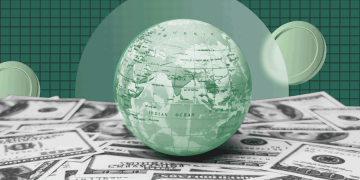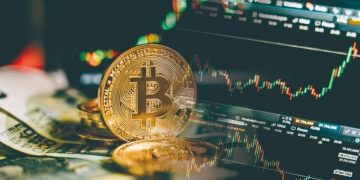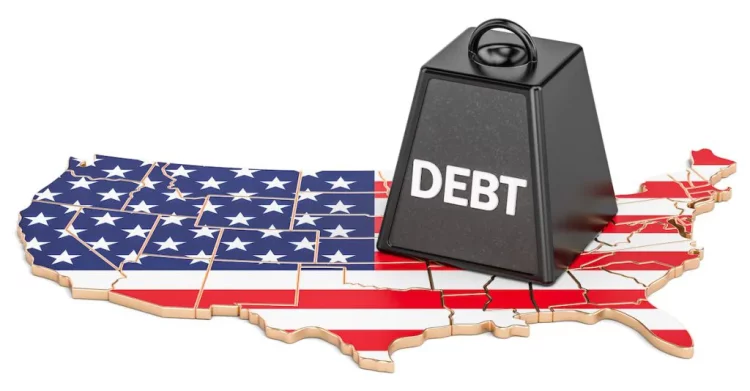Introduction
In recent years, the United States has seen a significant increase in its national debt, raising concerns about its potential long-term implications for the economy and investors. The U.S. national debt, which currently exceeds $30 trillion, has been fueled by a combination of government spending, tax policies, and emergency responses to crises such as the COVID-19 pandemic. While the national deficit has sparked debates on fiscal sustainability, the question remains: Should investors be concerned about the implications of rising debt? This article explores the growing U.S. national debt, expert opinions on its risks, and potential consequences for inflation, interest rates, and market stability. It also offers strategies for investors looking to navigate the changing economic landscape.
1. A Look at the Growing U.S. National Debt and Fiscal Policy
The U.S. national debt has been rising steadily for decades, with a significant acceleration in recent years due to government spending on programs like the COVID-19 relief packages, infrastructure investments, and defense spending. The national debt is the total amount of money the U.S. government owes to creditors, including foreign governments, domestic investors, and other entities. This debt is financed primarily through the issuance of Treasury bonds, which are considered a safe investment, attracting both domestic and international buyers.
Fiscal Policy and Debt Accumulation
Fiscal policy refers to government decisions on taxation, spending, and borrowing. The Biden administration, for example, has increased government spending on infrastructure projects, social programs, and clean energy, leading to higher deficits. Tax policies, such as the proposal to raise taxes on corporations and high-income earners, have not been sufficient to offset the significant levels of spending. As a result, the national debt continues to grow.
Historically, the U.S. government has been able to manage large amounts of debt due to its status as the world’s largest economy and the U.S. dollar’s role as the global reserve currency. However, the sheer size of the debt, combined with rising annual budget deficits, has led to concerns about its long-term sustainability.

2. Expert Opinions on the Risks Associated with High National Debt Levels
Experts have differing opinions on the potential risks posed by the rising U.S. national debt. Some argue that the debt is not a pressing concern given the U.S. economy’s size and resilience, while others warn that it could lead to significant economic challenges.
Risks of Fiscal Imbalances
Many economists caution that the continued accumulation of national debt could eventually lead to fiscal imbalances that are difficult to manage. For instance, high levels of debt may require higher interest payments, which could crowd out other critical government spending, such as investments in infrastructure or social programs. In extreme cases, it could lead to a situation where the government is forced to either raise taxes significantly or cut spending, both of which could have negative economic consequences.
Inflationary Pressures
Another concern raised by experts is the potential for inflationary pressures arising from high levels of government borrowing. When the government borrows large sums of money to finance its deficits, it increases the overall demand for money in the economy. If this demand exceeds the supply of goods and services, it could lead to higher inflation. The U.S. Federal Reserve has been active in managing inflation, but high levels of debt combined with expansive fiscal policies could make it more challenging to control inflation in the future.
3. Potential Consequences of Debt for Inflation, Interest Rates, and Market Stability
The rising national debt has several potential consequences for key economic indicators, including inflation, interest rates, and market stability. These factors can have direct implications for investors across different asset classes.
Inflation Risks
As the U.S. government borrows more money to finance its deficits, there is a risk that inflation could rise. When the government increases its borrowing, it can lead to more money circulating in the economy, increasing the demand for goods and services. If the supply of goods and services does not keep up with this demand, inflation could result. Moreover, inflation erodes the purchasing power of money, which can negatively impact fixed-income investors and anyone relying on savings.
Interest Rates and Debt Servicing Costs
Interest rates are another area that could be affected by the growing national debt. As the government increases its borrowing, it may need to offer higher interest rates on Treasury bonds to attract buyers. Higher interest rates can lead to higher borrowing costs for businesses and consumers, slowing down economic growth. In addition, if the government needs to pay higher interest on its debt, it could further strain its budget, leading to a cycle of borrowing and debt accumulation.
Market Volatility and Investor Sentiment
The growing debt could also contribute to increased market volatility. Investors closely monitor the health of government finances, and concerns about rising debt could lead to fluctuations in the stock market, bond yields, and foreign exchange markets. If investors begin to worry about the U.S. government’s ability to service its debt, they may demand higher returns on Treasury bonds, leading to higher interest rates and potentially triggering a sell-off in the bond markets. This could have broader implications for equity markets and investor sentiment.
4. Strategies for Investors in Light of Rising U.S. Debt
In light of the rising national debt and the potential consequences for inflation, interest rates, and market stability, investors must take steps to adjust their portfolios to mitigate risks and capitalize on opportunities.
Diversifying Portfolios
One of the key strategies for investors facing rising debt and potential market instability is diversification. By holding a broad mix of assets, such as stocks, bonds, commodities, and real estate, investors can reduce their exposure to any single asset class that may be negatively impacted by rising debt. For example, stocks in sectors that benefit from higher government spending, such as clean energy and infrastructure, may perform well, while certain fixed-income investments could underperform if interest rates rise.
Inflation-Protected Securities
Given the potential for rising inflation, investors may want to consider inflation-protected securities, such as Treasury Inflation-Protected Securities (TIPS). These bonds are designed to protect investors from inflation by adjusting their principal value based on changes in the Consumer Price Index (CPI). TIPS can provide a hedge against inflation and offer a steady income stream for income-focused investors.
Investing in Real Assets
Real assets, such as real estate, commodities, and precious metals, can act as a hedge against inflation and market volatility. These assets tend to appreciate in value during periods of high inflation and economic uncertainty. Investors may consider adding these types of investments to their portfolios to provide a buffer against the erosion of purchasing power due to inflation.
Monitoring Interest Rates and Debt Levels
Investors should stay informed about changes in interest rates and the government’s fiscal policies. Rising interest rates could negatively impact certain sectors, such as real estate and utilities, which are sensitive to borrowing costs. Conversely, sectors that benefit from higher interest rates, such as financials, may present opportunities for growth.
Conclusion
The growing U.S. national debt is a complex issue with wide-ranging implications for the economy and investors. While some experts argue that the debt is manageable given the U.S. economy’s size and global influence, others warn that rising debt levels could lead to inflationary pressures, higher interest rates, and market instability. Investors must carefully consider the potential risks and adjust their strategies accordingly. By diversifying portfolios, investing in inflation-protected securities, and monitoring economic trends, investors can better position themselves to navigate the challenges posed by rising national debt and fiscal policy changes.

































